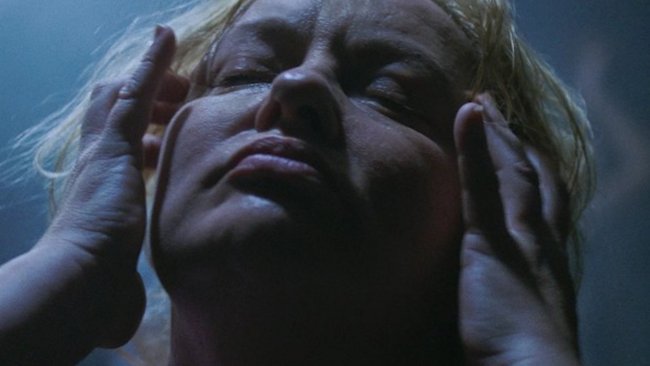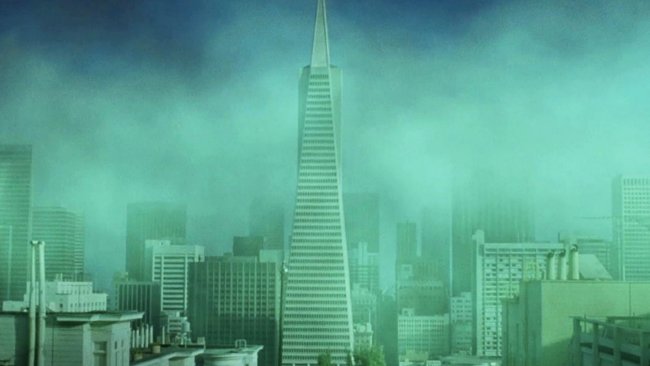Girl
[…] Mirror reflections are strongly used in scenes where Lara encounters this body; a body that she straps, folds, starves, stretches, extends, pierces and finally cuts to achieve the appearance that fits with her strength of feeling: that which she is not.
[…] Dhont, in this case, allows us to see the weakness of gender identification alone, and proves its distinction from the facticity of sex with which we are born. Society indeed identifies her gender as girl, but what Lara experiences is the sex that she is not.
[…] There is an intrusive, stalker quality that is signature of Frank van den Eeden’s work. It moves with every graceful step and frenetic direction, pressing us closer and closer with claustrophobic emphasis to witness Lara’s implosion.
Text: Jodie McNeilly

In my country, there is a fight within our Senate to (hopefully) block an amendment of exemption to the Federal Sex Discrimination Act that will enable certain independent schools from preventing gay, lesbian and transgender students and teachers from attending and working at these institutions. Understanding the struggles for persons desiring to transition or live their identified gender within a context where acceptance is still an issue, and the discrimination and secrecy inherent of transgender films like Transamerica (2005 , by Dunkan Tucker, starring Felicity Hoffman) and Saturday Church (2017, by Damon Cardasis), made me expect the usual vilifications to be played out against Lara, the young transgender boy wishing to become both a girl and ballerina in Lukas Dhont’s first feature film Girl; but I could not have been more wrong.
Lara, played by dancer Victor Polster in his debut award winning role (Un Certain Regard at Cannes Festival 2018), wants to make the gruelling physical transformations into being a girl and a ballerina. We are quickly made to realise the openness and support that Lara receives from her loving father Mathias (Arieh Worthalter) who unflinchingly moves city to fulfil her dreams, takes her to endless medical appointments, and explicitly worries in almost every exchange between the two about the mutilations and starvation that begin to accompany her bodily transformation. But what mostly haunts Mathias’ face is his concern toward the depth of silence which veils a deeper despairing impatience beneath her happy façade. This support is found extended in family friends, her medical team and psychologist, and the dance school where Lara is training to perform with their corp. Her acceptance by all in every setting rarely falters, even in the scene where her girlfriends, out of curiosity, ask to see her penis. This scene is never violently intended as ignorance or discrimination, but a moment where we are to understand Lara’s mounting sadness with the body in which she is trapped.
Mirror reflections are strongly used in scenes where Lara encounters this body; a body that she straps, folds, starves, stretches, extends, pierces and finally cuts to achieve the appearance that fits with her strength of feeling: that which she is not. She numbs with ice the appendage that irrupts her true sense of self and then cuts it off. From this desperate act we understand with greater impact the suffering of transgenders who, even in the most supportive of circumstances, whereby everyone sees you as the gender you wish to be, this strength of feeling cannot be reconciled with only positive attitudes.
Lara’s life is a series of self-mutilations in order to find the body and appearance that she believes is her identity. Dhont, in this case, allows us to see the weakness of gender identification alone, and proves its distinction from the facticity of sex with which we are born. Society indeed identifies her gender as girl, but what Lara experiences is the sex that she is not. What we see is her commitment to a corporeal erasure at any cost.
The many scenes of dance build analogously alongside the step by step process of her sex-change operation. From an initial awkwardness in backward bourrées, to a developing confidence of poise and fluidity, the dance ends with a physical and mental breakdown: spinning, hacking, stumbling, disoriented – she is told to wait for the operation. In its presiding portraiture, the cinematography insists upon centralising Lara in almost every frame. There is an intrusive, stalker quality that is signature of Frank van den Eeden’s work. It moves with every graceful step and frenetic direction, pressing us closer and closer with claustrophobic emphasis to witness Lara’s implosion. In a final mirror reflection, blurred and out of focus, Lara – now having taken matters into her own hands – encounters the girl she is. No longer will she have to concentrate on her appearance (as the doctor repeatedly warns her against doing). She can authentically embody the female she is, expressed in every emboldened step made in the last scene.
Polster’s performance is stunning. His command of the role is intuitive and brave. There is an entire landscape of complex emotions that lurks beneath his face, inescapable to the lens of van den Eeden. Dhont proves an intelligence and sensitivity to his subject matter; he also must be a film maker his collaborators can trust given the strength of performances and high quality of its production. If this is Polster and Dhont’s debut work, there is much to look forward to in both their careers.
This article contains a third-party video. If you would like to watch the video, please adjust your settings.
Watch
ONLINE STREAMING (Switzerland) by Filmexplorer's Choice on cinefile.ch and filmingo.ch
Info
Girl | Film | Lukas Dhont | BE-NL 2018 | 100’ | Zurich Film Festival 2018, Everybody’s Perfect Genève 2018
Caméra d’or, Queer Palm, Best Actor – Un certain regard at Cannes Festival 2018, Golden Eye at Zurich Film Festival 2018
First published: October 16, 2018



